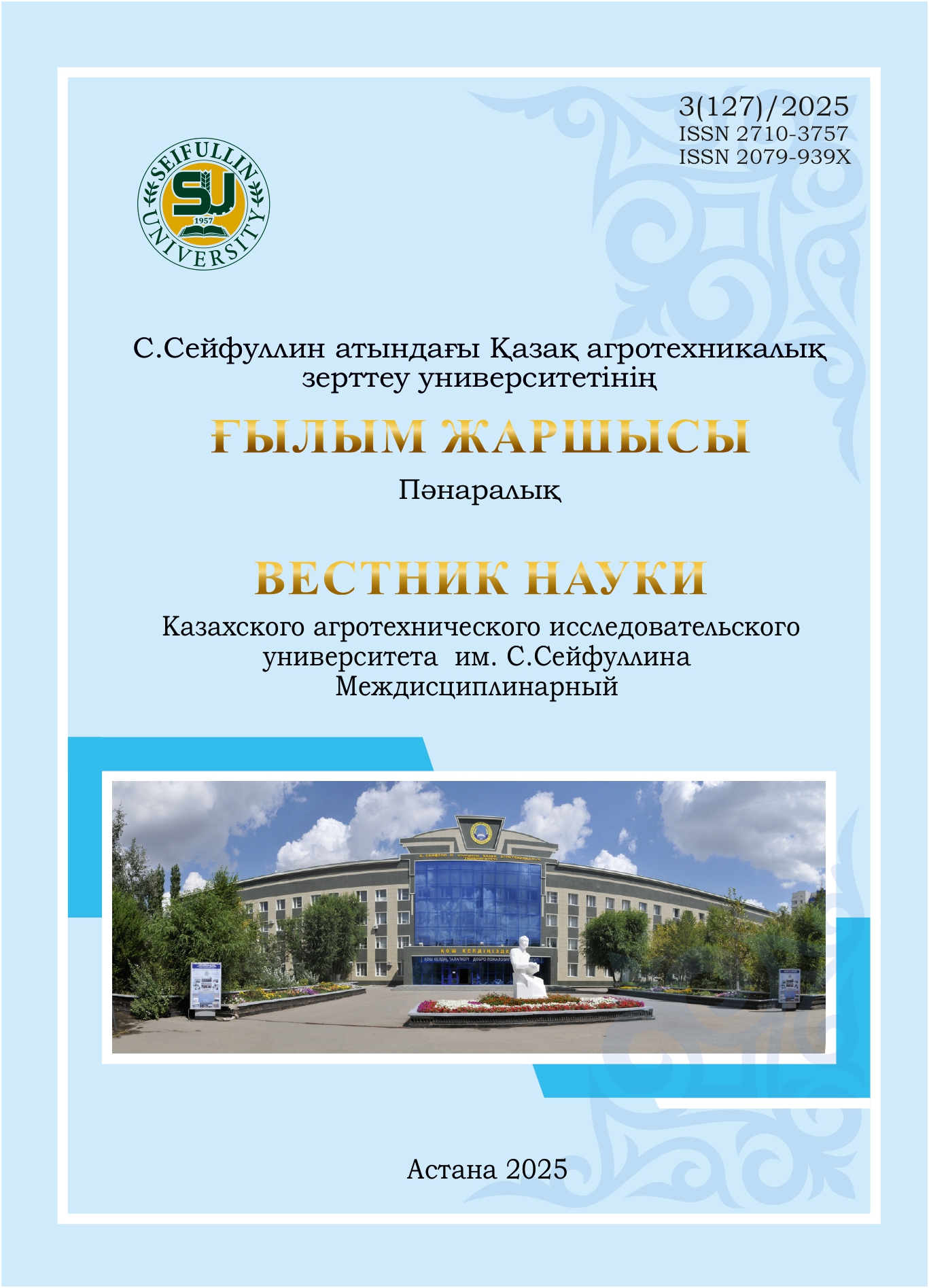Mathematical justification of the influence of agrotechnical practices on oilseed flax yield under the conditions of Northern Kazakhstan
DOI:
https://doi.org/10.51452/kazatu.2025.3(127).1939Keywords:
oilseed flax; sowing date; mineral fertilizer; mathematical modeling; statistical analysisAbstract
Background and Aim. In Northern Kazakhstan, the productivity of oilseed flax is significantly influenced by agronomic factors, including mineral nutrition and sowing date. A mathematical model quantifying the impact of these factors on crop yield can optimize agronomic practices and enhance agroecosystem productivity under specific agroclimatic conditions. This study aimed to develop a mathematical and statistical model describing the relationship between oilseed flax yield and key agronomic parameters.
Materials and Methods. The study was conducted at the North Kazakhstan Agricultural Experimental Station in 2023 2024. The experiment included various mineral nutrition regimes and two sowing dates. Analysis of variance (ANOVA) and multivariate regression modeling were used for data processing. Correlation heatmaps were generated to identify the most influential factors affect-ing yield.
Results. The highest yield (up to 16.2 c/ha) was achieved with optimal mineral nutrition combined with early sowing. The developed mathematical model accurately predicted yield based on growing conditions. The coefficient of determination (R2=0,692) indicated that the model ex-plains approximately 69% of the yield variability associated with fertilizer application. Seed mass per square meter (m2) (r=0,76) and thousand seed weight (r=0,72) contributed most significantly to yield.
Conclusion. Mathematical modeling can affectively optimize agronomic practices for oilseed flax cultivation in Northern Kazakhstan. These findings contribute to improved crop production ef-iciency and provide a basis for recommending optimal farming strategies for growers.

